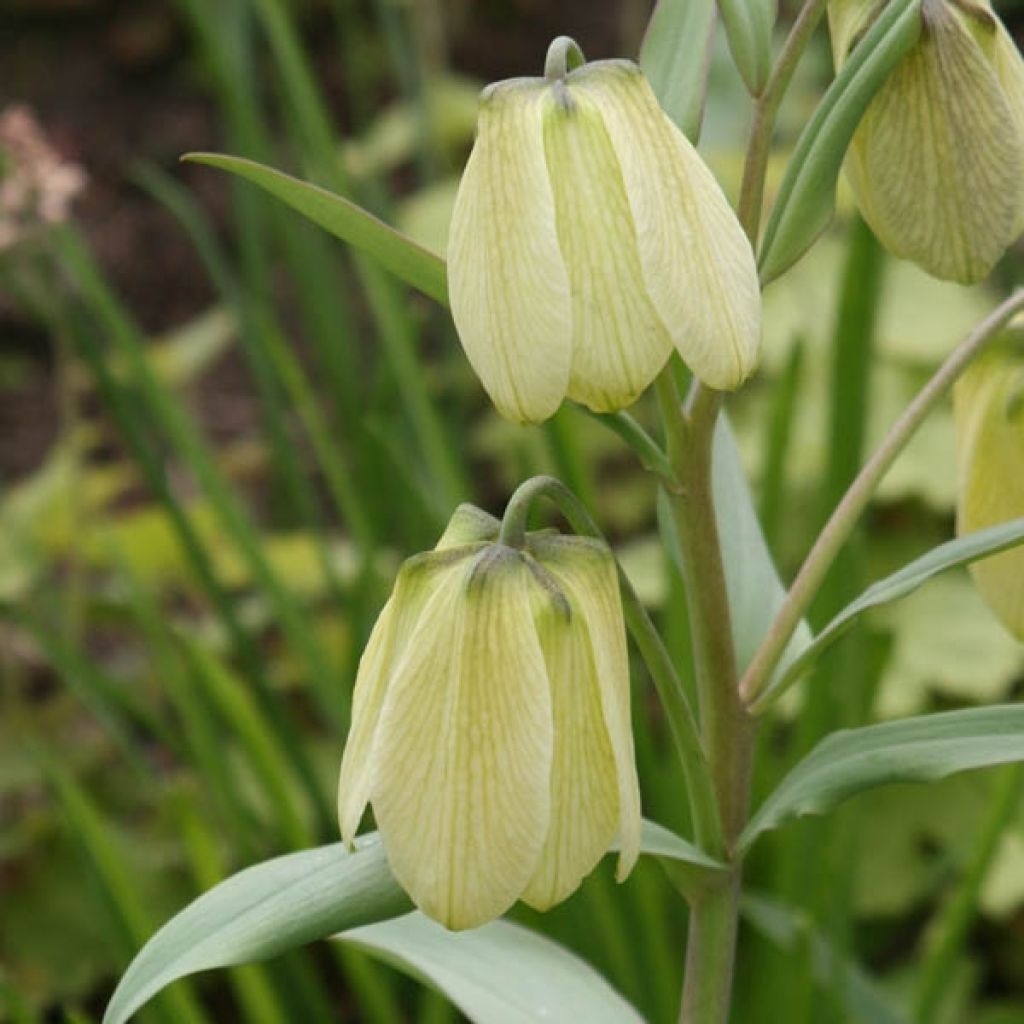

Fritillaria pallidiflora
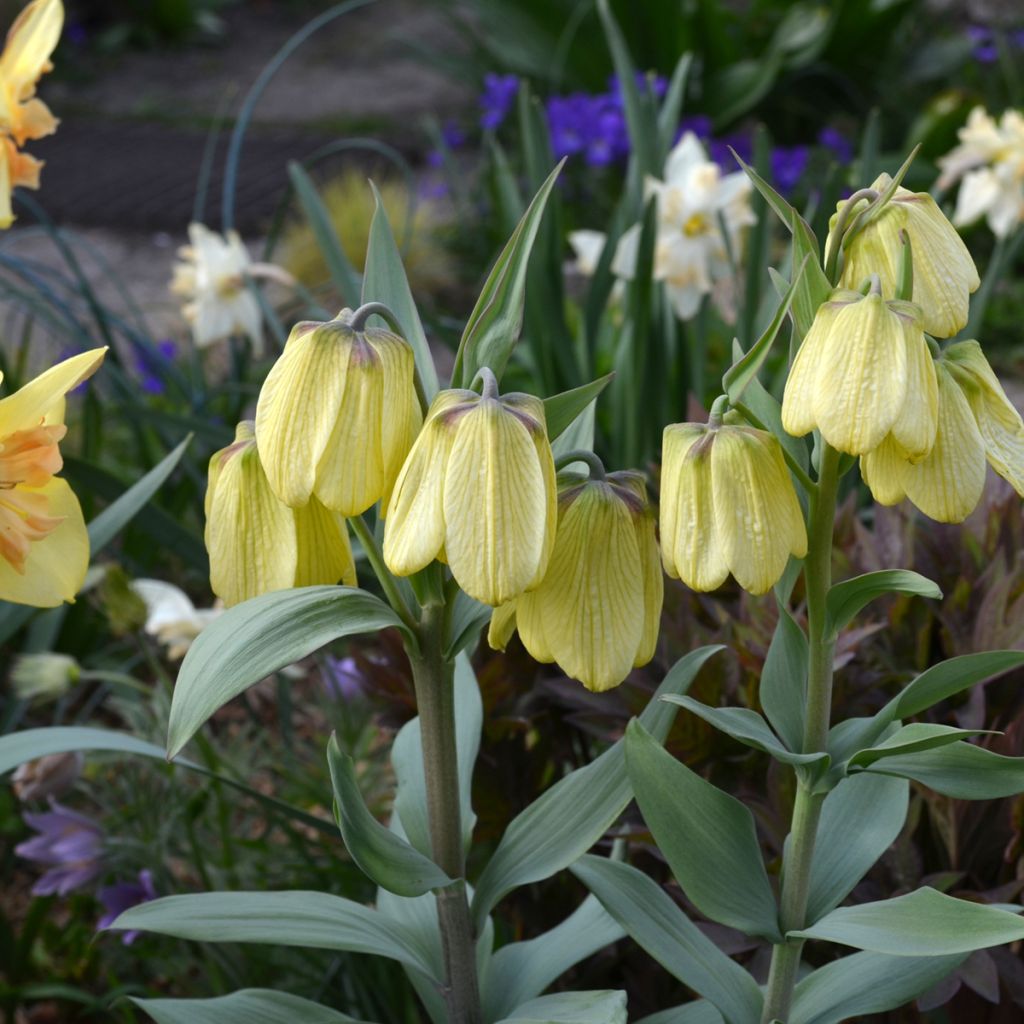

Fritillaire pallidiflora - Fritillaire à fleurs pâles
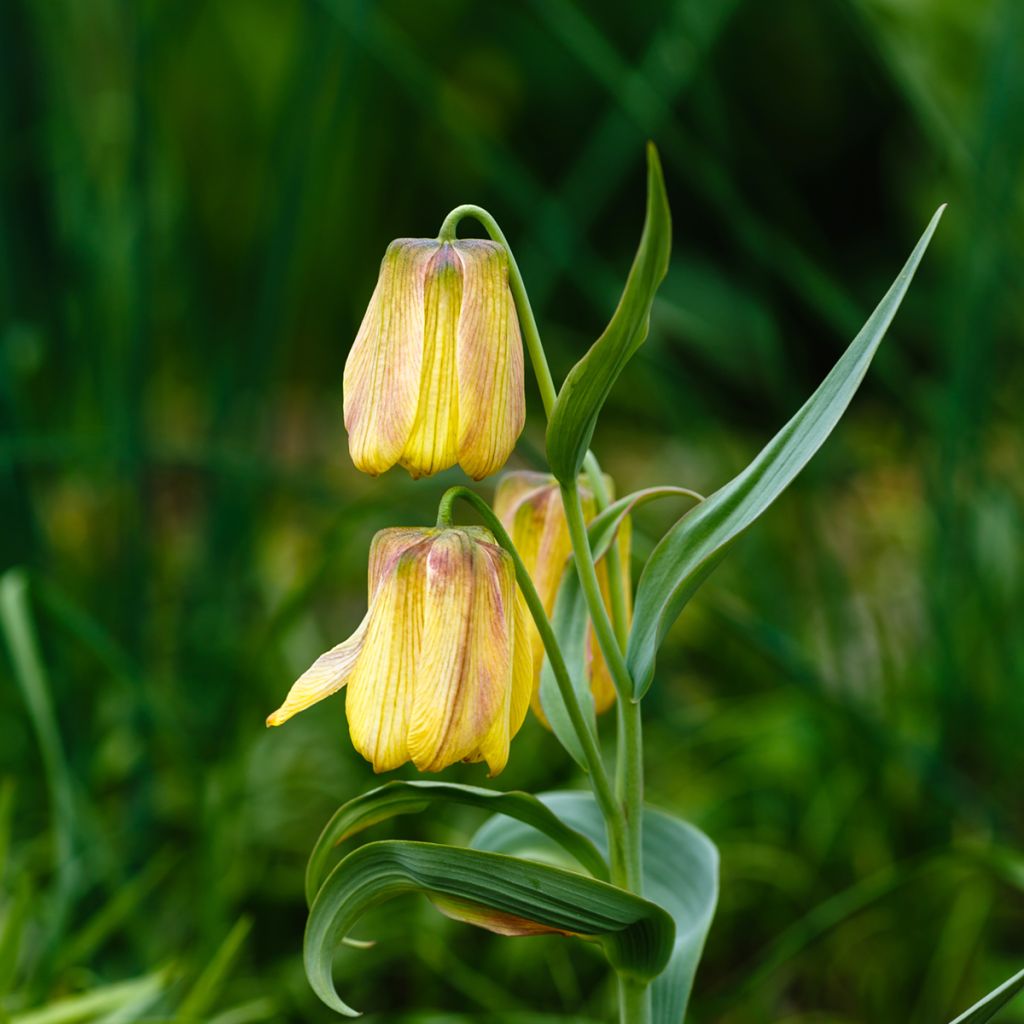

Fritillaire pallidiflora - Fritillaire à fleurs pâles
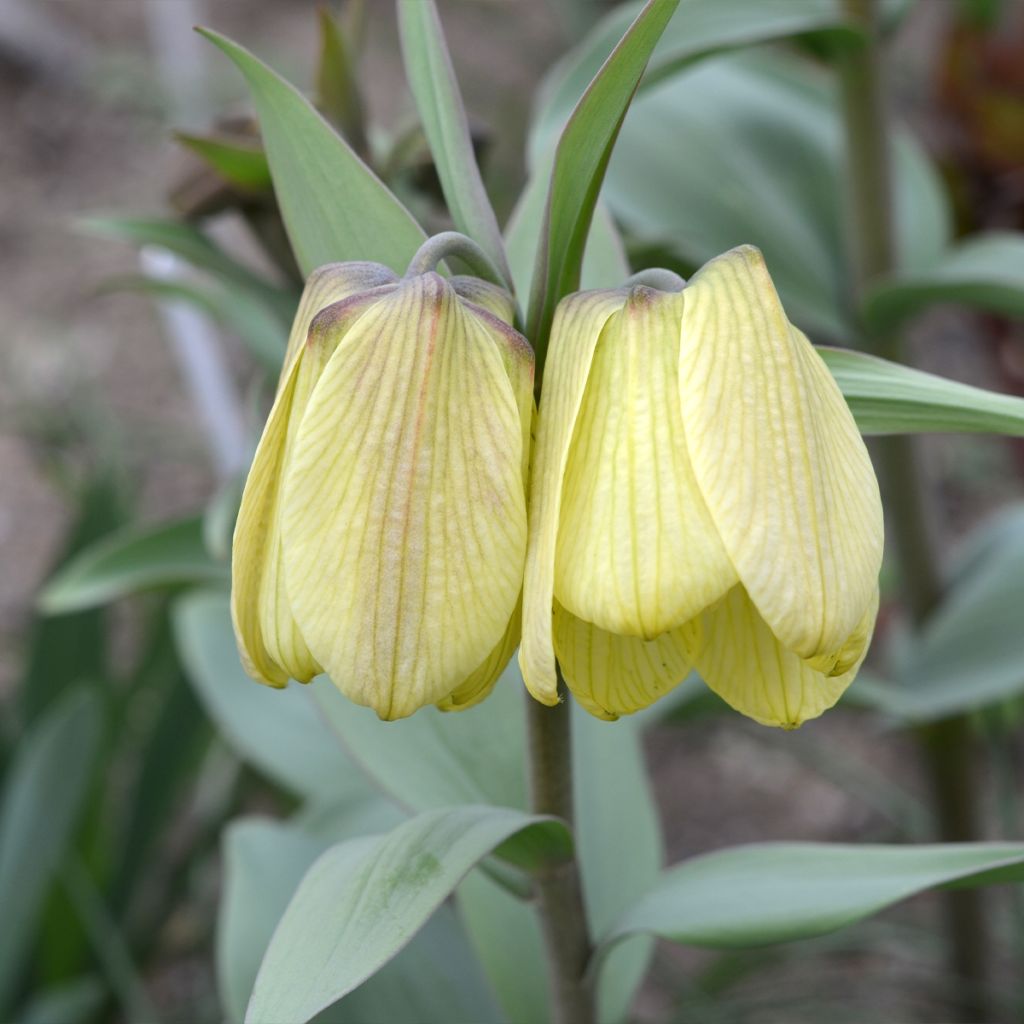

Fritillaire pallidiflora - Fritillaire à fleurs pâles
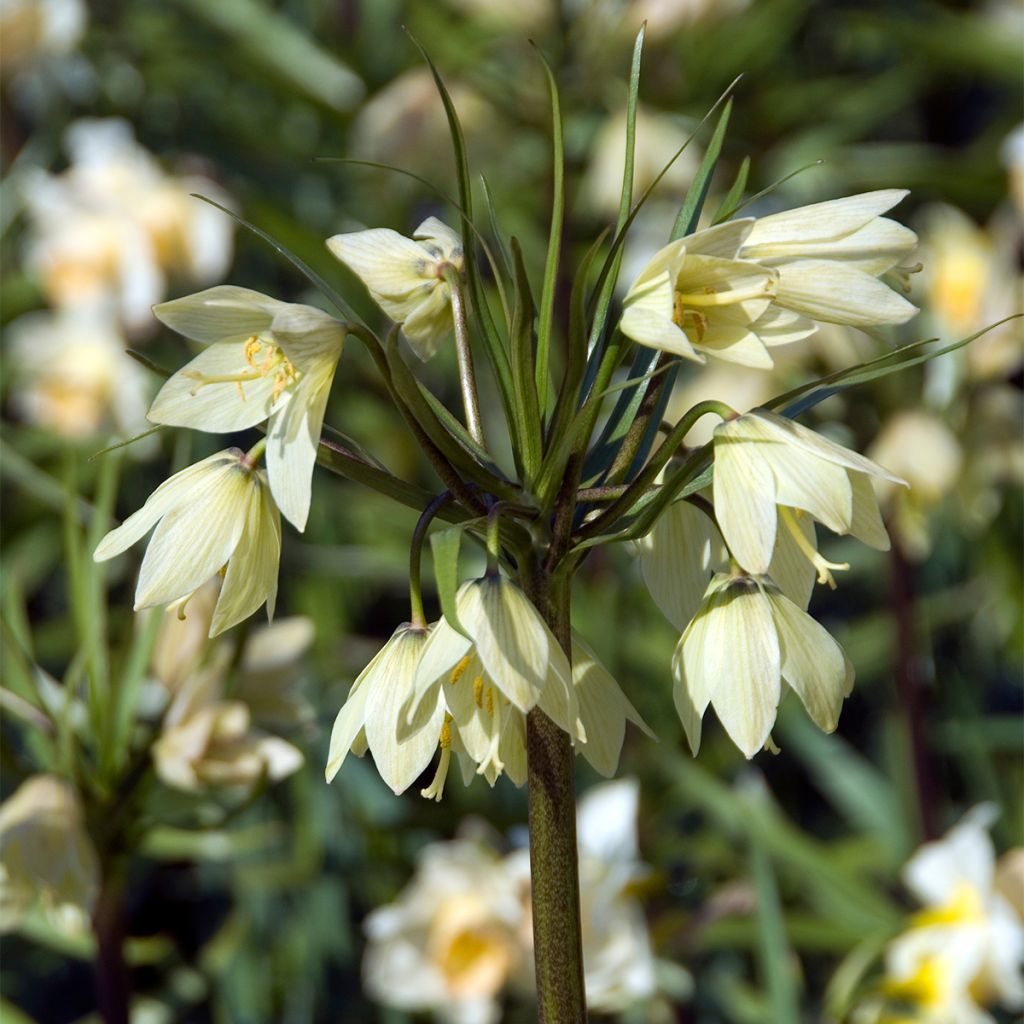

Fritillaire pallidiflora - Fritillaire à fleurs pâles
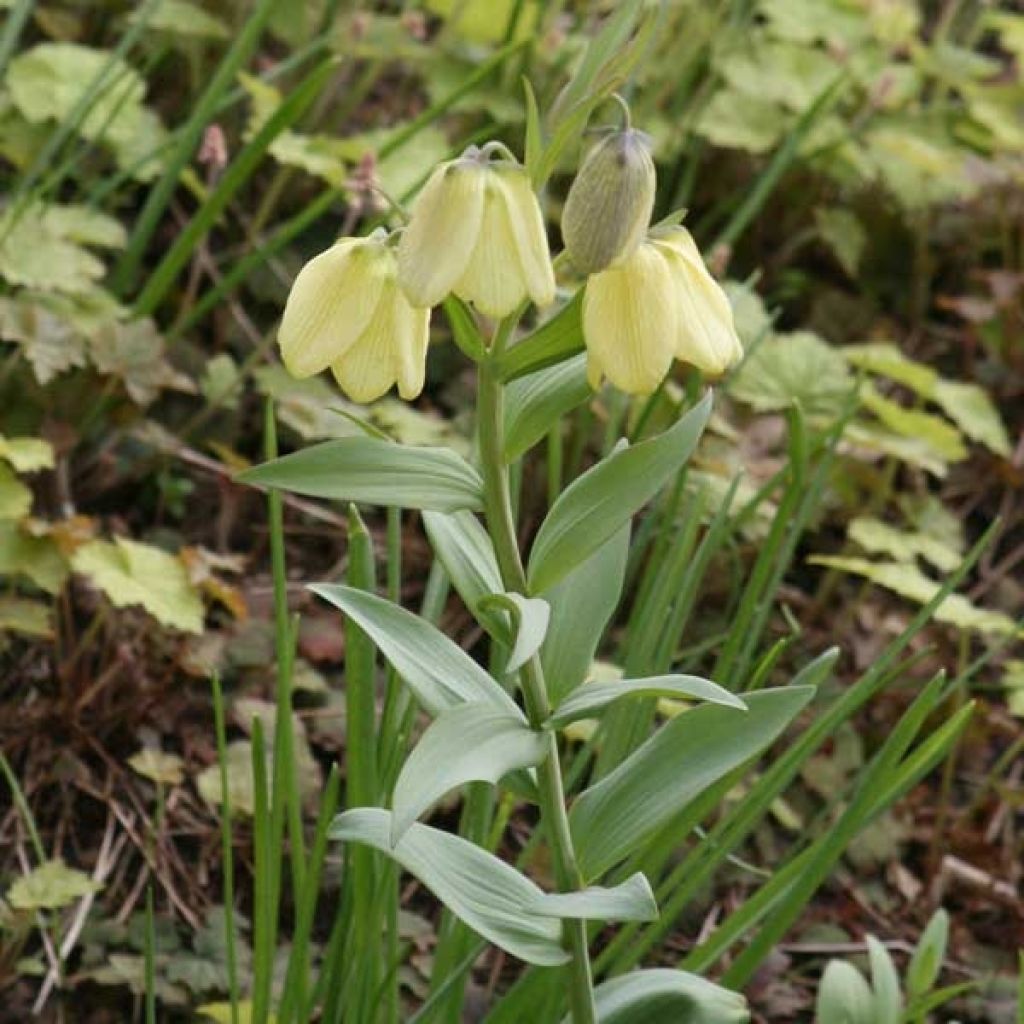

Fritillaria pallidiflora
Fritillaria pallidiflora
Fritillaria pallidiflora
Siberian Fritillary
Well.
Walburga, 13/11/2024
This plant carries a 6 months recovery warranty
More information
We guarantee the quality of our plants for a full growing cycle, and will replace at our expense any plant that fails to recover under normal climatic and planting conditions.
From €5.90 for pickup delivery and €6.90 for home delivery
Express home delivery from €8.90.


Does this plant fit my garden?
Set up your Plantfit profile →
Description
Fritillaria pallidiflora, sometimes called the pale-flowered fritillary, is a fairly rare bulbous plant in cultivation, not widely grown in gardens. It is a flowering botanical species, with pale-yellow flowers that are sometimes greenish. They easily blend into decorations of all styles. The bulb produces floral stems adorned with leaves resembling those of lilies, and pendant bells in spring. Each plant can produce over a dozen flowers. This hardy fritillary is quite easy to grow in the sun in moist, well-drained soil.
Fritillaria pallidiflora belongs to the Liliaceae family. It is a species native to central Asia, particularly northern China, Kyrgyzstan, and Kazakhstan, where it is found up to an altitude of 1200m (3937ft). It has excellent hardiness if the soil is rather dry in winter. On the other hand, the plant appreciates slightly moist soil throughout its growth and flowering period. The vegetation emerges from the ground in spring, in the form of leafy stems reaching about 40cm (16in) in height. Flowering generally takes place in May, sometimes as early as April depending on the region. Each stem bears 2 to 6 campanulate flowers, pale-yellow to anise green in colour, veined with green. Each flower, hanging towards the ground, measures about 3 to 4cm (1 to 2in) in diameter. The green-grey foliage is composed of oblong-lanceolate or obovate leaves, ranging from 3.5 to 12cm (1 to 5in) long, covered with a bloom. The above-ground vegetation disappears in summer, and the plant goes into dormancy.
This magnificent pale-flowered fritillary is best planted in small groups. It blends well in different types of gardens, taking over from traditional spring bulbs (such as tulips and narcissus). They can be associated with easy annual plants such as nigellas, poppies, and knapweeds, for example. Stunning in naturalistic compositions, this variety also pairs well with hostas, creating a beautiful contrast in texture. If you have a natural pond or a stream, make some room for this lovely fritillary.
Report an error about the product description
Fritillaria pallidiflora in pictures
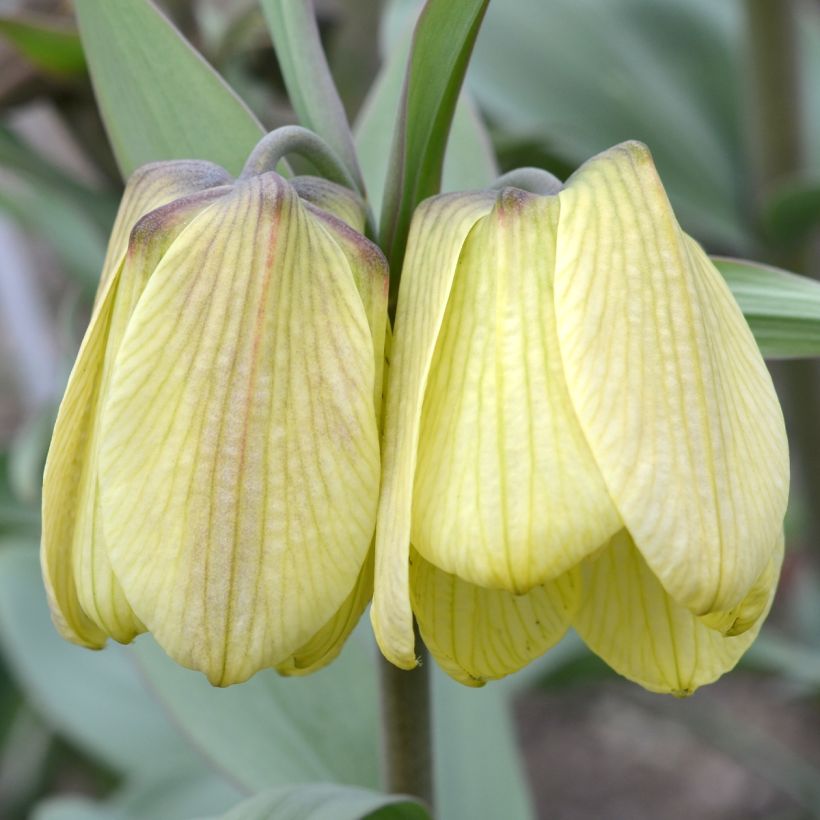

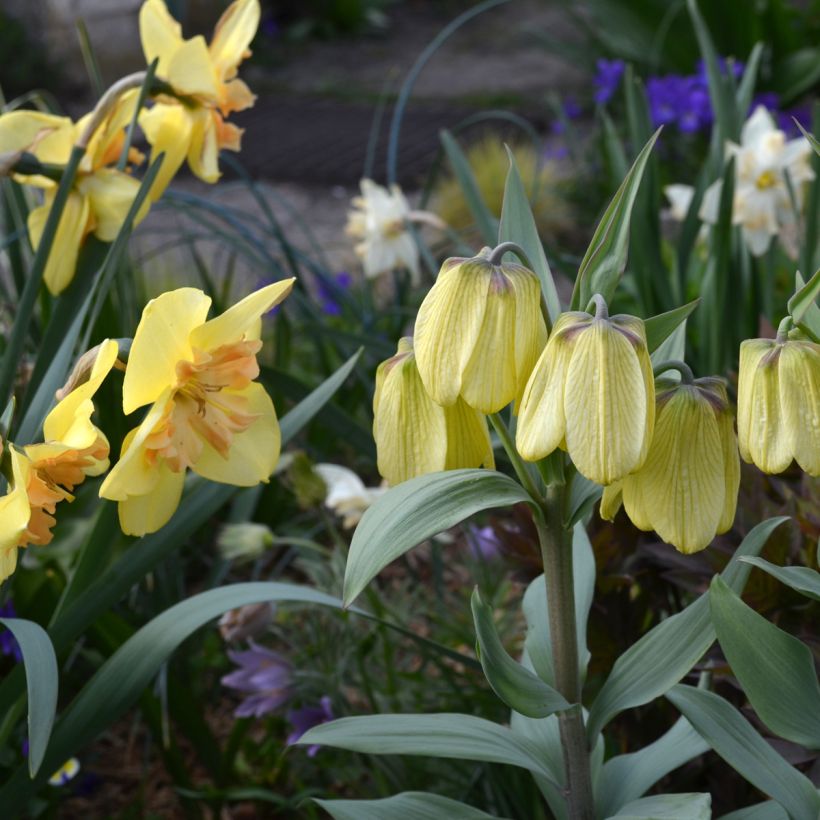

Plant habit
Flowering
Foliage
Botanical data
Fritillaria
pallidiflora
Liliaceae
Siberian Fritillary
Central Asia
Planting and care
Plant your fritillary bulbs in groups of 3 or 5 in moist but not waterlogged soil, at a depth of 10cm (4in) and with a spacing of 25cm (10in). Plant in the sun. A supply of turf and ericaceous soil will always be beneficial to it. Fairly dry soil in winter is preferable.
Planting period
Intended location
Care
-
, onOrder confirmed
Reply from on Promesse de fleurs
Haven't found what you were looking for?
Hardiness is the lowest winter temperature a plant can endure without suffering serious damage or even dying. However, hardiness is affected by location (a sheltered area, such as a patio), protection (winter cover) and soil type (hardiness is improved by well-drained soil).

Photo Sharing Terms & Conditions
In order to encourage gardeners to interact and share their experiences, Promesse de fleurs offers various media enabling content to be uploaded onto its Site - in particular via the ‘Photo sharing’ module.
The User agrees to refrain from:
- Posting any content that is illegal, prejudicial, insulting, racist, inciteful to hatred, revisionist, contrary to public decency, that infringes on privacy or on the privacy rights of third parties, in particular the publicity rights of persons and goods, intellectual property rights, or the right to privacy.
- Submitting content on behalf of a third party;
- Impersonate the identity of a third party and/or publish any personal information about a third party;
In general, the User undertakes to refrain from any unethical behaviour.
All Content (in particular text, comments, files, images, photos, videos, creative works, etc.), which may be subject to property or intellectual property rights, image or other private rights, shall remain the property of the User, subject to the limited rights granted by the terms of the licence granted by Promesse de fleurs as stated below. Users are at liberty to publish or not to publish such Content on the Site, notably via the ‘Photo Sharing’ facility, and accept that this Content shall be made public and freely accessible, notably on the Internet.
Users further acknowledge, undertake to have ,and guarantee that they hold all necessary rights and permissions to publish such material on the Site, in particular with regard to the legislation in force pertaining to any privacy, property, intellectual property, image, or contractual rights, or rights of any other nature. By publishing such Content on the Site, Users acknowledge accepting full liability as publishers of the Content within the meaning of the law, and grant Promesse de fleurs, free of charge, an inclusive, worldwide licence for the said Content for the entire duration of its publication, including all reproduction, representation, up/downloading, displaying, performing, transmission, and storage rights.
Users also grant permission for their name to be linked to the Content and accept that this link may not always be made available.
By engaging in posting material, Users consent to their Content becoming automatically accessible on the Internet, in particular on other sites and/or blogs and/or web pages of the Promesse de fleurs site, including in particular social pages and the Promesse de fleurs catalogue.
Users may secure the removal of entrusted content free of charge by issuing a simple request via our contact form.
The flowering period indicated on our website applies to countries and regions located in USDA zone 8 (France, the United Kingdom, Ireland, the Netherlands, etc.)
It will vary according to where you live:
- In zones 9 to 10 (Italy, Spain, Greece, etc.), flowering will occur about 2 to 4 weeks earlier.
- In zones 6 to 7 (Germany, Poland, Slovenia, and lower mountainous regions), flowering will be delayed by 2 to 3 weeks.
- In zone 5 (Central Europe, Scandinavia), blooming will be delayed by 3 to 5 weeks.
In temperate climates, pruning of spring-flowering shrubs (forsythia, spireas, etc.) should be done just after flowering.
Pruning of summer-flowering shrubs (Indian Lilac, Perovskia, etc.) can be done in winter or spring.
In cold regions as well as with frost-sensitive plants, avoid pruning too early when severe frosts may still occur.
The planting period indicated on our website applies to countries and regions located in USDA zone 8 (France, United Kingdom, Ireland, Netherlands).
It will vary according to where you live:
- In Mediterranean zones (Marseille, Madrid, Milan, etc.), autumn and winter are the best planting periods.
- In continental zones (Strasbourg, Munich, Vienna, etc.), delay planting by 2 to 3 weeks in spring and bring it forward by 2 to 4 weeks in autumn.
- In mountainous regions (the Alps, Pyrenees, Carpathians, etc.), it is best to plant in late spring (May-June) or late summer (August-September).
The harvesting period indicated on our website applies to countries and regions in USDA zone 8 (France, England, Ireland, the Netherlands).
In colder areas (Scandinavia, Poland, Austria...) fruit and vegetable harvests are likely to be delayed by 3-4 weeks.
In warmer areas (Italy, Spain, Greece, etc.), harvesting will probably take place earlier, depending on weather conditions.
The sowing periods indicated on our website apply to countries and regions within USDA Zone 8 (France, UK, Ireland, Netherlands).
In colder areas (Scandinavia, Poland, Austria...), delay any outdoor sowing by 3-4 weeks, or sow under glass.
In warmer climes (Italy, Spain, Greece, etc.), bring outdoor sowing forward by a few weeks.



































